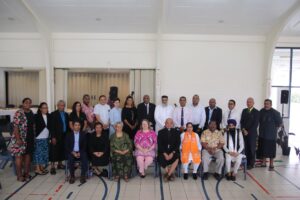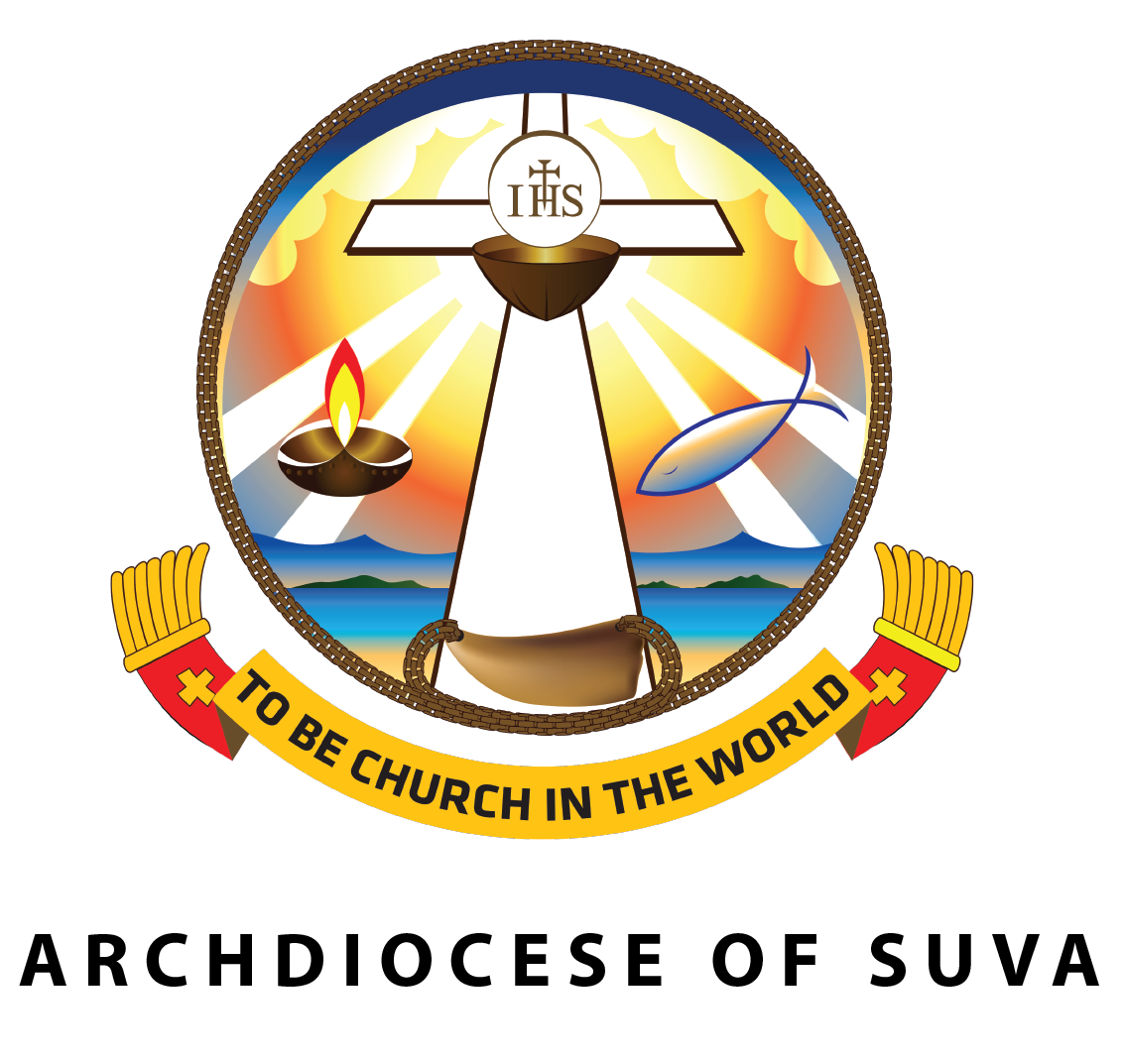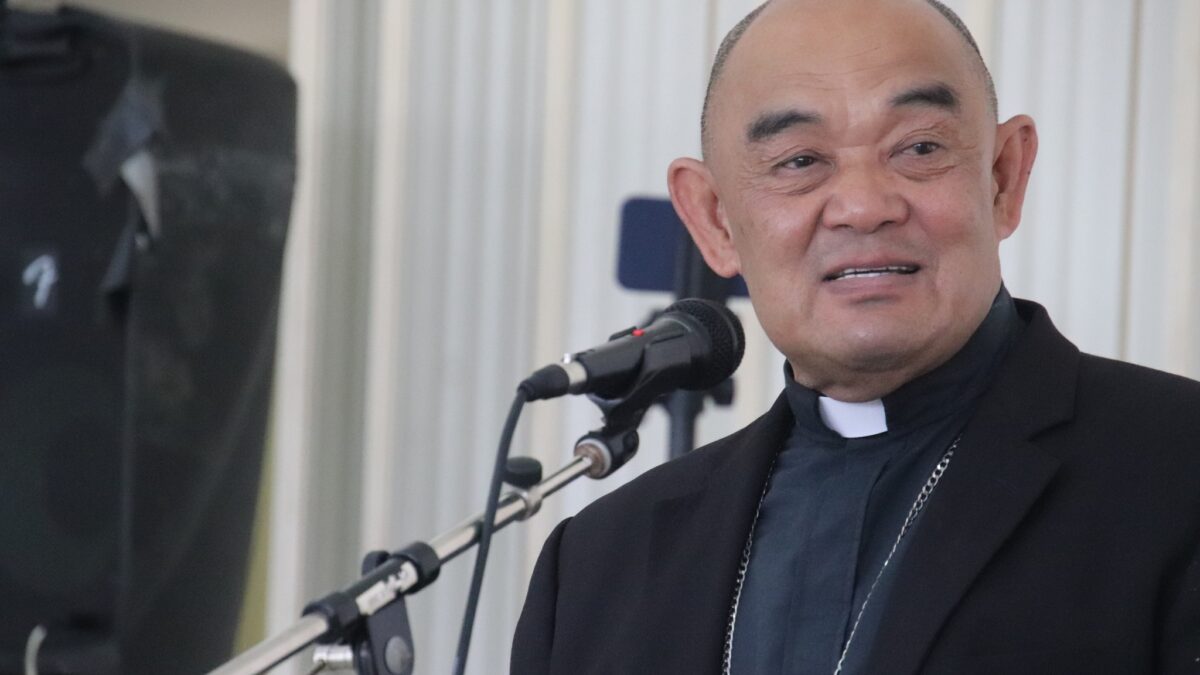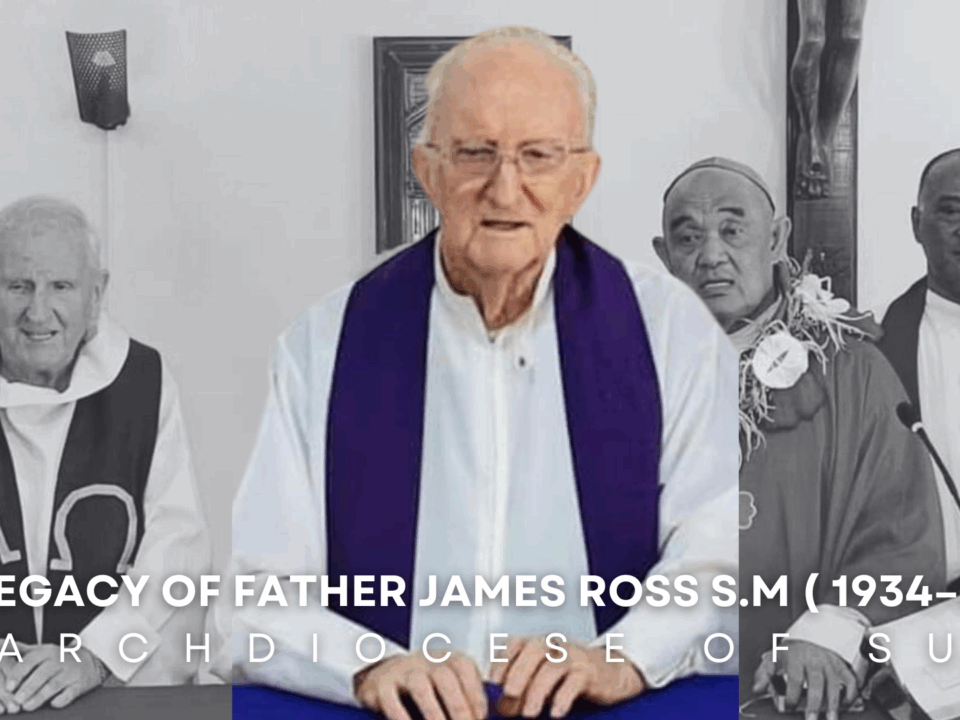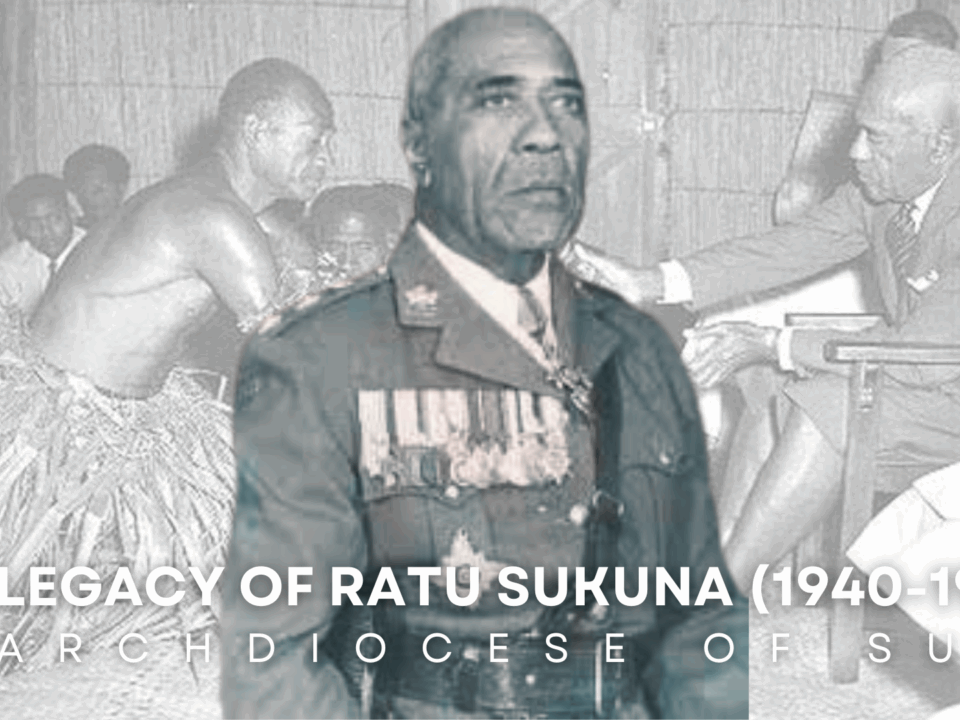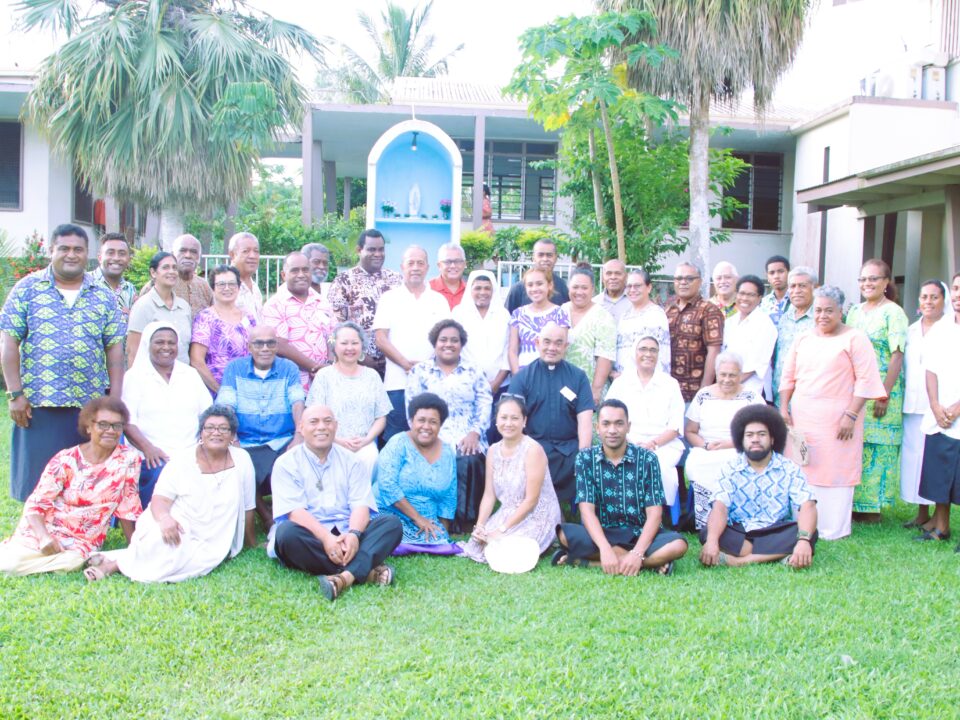Archbishop Peter Chong’s Sermon at Fiji Council of Church’s Prayer Breakfast Theme: Truth and Reconciliation
Fiji 1960 to1970
I was born in 1961 during the time when Fiji was preparing for independence and election.
This was time of high racial-political tensions in Fiji
A TIME BOMB LIES BURIED: FIJI’S ROAD TO INDEPENDENCE 1960-70
Fiji was moving towards independence and elections.
Tensions between the Indigenous Fijian political bloc – espousing itaukei paramountcy and an election process based on ethnicity to favour itaukei versus Indo-Fijians’ option for common roll voting system
A draft Fiji policy was prepared for the Cabinet’s Defence and Overseas Policy Committee.
Here the options open to the United Kindgdom were examined in detail.
The draft policy stated that Independence on the basis of Fijian paramountcy was recommended. ‘We will not in the end be able to justify, either in conscience, or in political terms, in our own country, a solution that does not ensure that independence will leave Fijians in control.’ If Fijians did not get paramountcy, ‘the risk is that they will take by force and by unconstitutional means that which they consider to be theirs. This could produce an extremely serious internal security situation, in which we should have difficulty in protecting the Indian community.’
In the early months of 1970, the inter-party talks produced a large measure of consensus among the leaders. On the most contentious issue that had long divided the two parties were:
- the electoral system
- Paramountcy of Indigenous Fijians
- Equality to Indo-Fijians
- Method of election & Common Roll
The parties reached a compromise, they will head into independence and deal with the election process later.
The logic of the electoral system adopted at independence was that the voters of Fiji would continue to vote on racial lines. A racially based electoral system engendered racial voting, inevitably at the expense of the greater national good.
The logic of the electoral arrangements was clear. If a political party was able to keep its ethnic base intact and split the opposition’s, its victory was assured. In this, the Alliance was consistently more successful than the Federation Party.
Brij Lal wrote, “Fiji after independence was not a ‘nation’ of diverse peoples with common hopes and aspirations but a coalition of competing ethnicities with their own communal agendas. Elections came to be seen not as contests between political parties with competing ideologies, but as zero-sum racial contests. An election lost was thus seen as a loss for a ‘race’.
Two days before Fiji became independent on 10 October 1970 — exactly 96 years from the date when it had become a British Crown colony, Sir Robert Foster penned his last dispatch as governor of Fiji (Appendix 2). In it, he tried to capture the mood of the moment, the sometimes tumultuous events that had led to it, embroiled it in conflict and tension, and offered his prognosis on what the future held for the young nation.
“A calm search for a just solution to the problem of representation has in the past proved virtually impossible: feelings ran far too deep. One is therefore bound to regret that in effect a time bomb will lie buried in the new Constitution, and to pray that it may be defused before exploding. The two parties have however publicly committed themselves to an act of faith which must give reasonable ground for hope.”
Reasonable hope: that, alas, was all that could be hoped for as Fiji took its first tentative steps into an independent future.
The 1970 constitution faced its true test in 1987 when a Fijian party in power for 21 years (from 1966 to 1987) lost the general election to the Fiji Labour Party–National Federation Party Coalition. Political ideology proved to be stronger than ethnicity.
Let us not forget the hidden player in the Itaukei and Indo-Fijian Saga – the British colonial rule.
POST INDEPENDENCE
After independence Fiji has gone through a Coup culture or cycle and 16 Years of un- freedom – oppression. The pre- and post-independence have left a trail of victims of injustices. Thus, there is an urgent need for healing and reconciliation.
Historical Consciousness
A historical consciousness is necessary. History tells us: Where we came from? How we arrive to the present? Helps us guide the future and not to make the same mistakes of the past.
We applaud the parliament for accepting the motion to establish a Truth and Reconciliation Commission.
Catholic Perspective of Reconciliation
My proposals for a pathway to reconciliation in Fiji draws from Robert Schreiter’s books on Reconciliation, especially – The Ministry of Reconciliation: Strategies and Spirituality and Archbishop Desmond Tutu’s book, No Future without Forgiveness. Schreiter’s book was written in 1992 when the need for social reconciliation was becoming more evident and nations were turning to the challenge of reconstruction after a time of acute violence.
Schreiter argues that reconciliation is more spirituality than a strategy. Reconciliation has to do with rebuilding shattered lives so that social reconciliation becomes a reality. He argues that the state can set up commissions to examine wrongdoing of the past, but it cannot legislate the healing of memories. The state can also offer amnesty or mete out punishment to wrongdoers, but it cannot guarantee forgiveness.
Schreiter represents the Catholic theology and vision of reconciliation. Catholic theology for reconciliation is based on the second letter of St Paul to the Corinthians, 2Cor. 5:17-20: However, he insists that Reconciliation has to take an interreligious approach – other Faith perspectives.
17 So if anyone is in Christ, there is a new creation: everything old has passed away; see, everything has become new! 18 All this is from God, who reconciled us to himself through Christ, and has given us the ministry of reconciliation; 19 that is, in Christ God was reconciling the world to himself, * not counting their trespasses against them, and entrusting the message of reconciliation to us. 20 So we are ambassadors for Christ, since God is making his appeal through us; we entreat you on behalf of Christ, be reconciled to God”.
The central point of Paul’s teaching on reconciliation is that God’s love has been poured onto us as the result of the reconciliation God has affected in Christ. Through reconciliation we have become a new creation. From Pauls’ letter Schreiter teaches five key points regarding reconciliation.
- Reconciliation is the work of God, who initiates and completes in us reconciliation through Christ. Reconciliation is not a human achievement, but the work of God within us. Furthermore, God initiates the work of reconciliation in the lives of the victims. Ordinarily we would expect the reconciliation to begin with the repentance of the wrongdoers. But experience shows that wrongdoers are rarely willing to acknowledge what they have done or come forward of their own accord. God begins the reconciliation process with the victims, restoring to the victim the humanity which the wrongdoer has tried to destroy. The restoration of humanity might be considered the very heart of reconciliation – the restoration of one’s damaged humanity in a life-giving relationship with God. God begins with the victim and not the evil doer is consistent in the history on divine activity in the world. God takes the side of the poor, the oppressed and imprisoned. It is through the victim that the wrongdoer is called to repentance and forgiveness. Reconciliation gives birth to repentance and forgiveness. A reconciled victim summons the repentance and forgiveness of the part of the wrong doer. Reconciliation begins with the healing of victims by God’s reconciling grace. They in turn work healing on the oppressors, offering the forgiveness that sparks repentance. The victims are God’s little ones, the anawim.
- Reconciliation is more spirituality than a strategy
Reconciliation is principally God’s work – we are ambassadors for Christ. We are mere instruments of God’s work of reconciliation. It is God working in us that brings about reconciliation. Hence reconciliation is spirituality. Reconciliation creates space for truth, justice, healing, and for new possibilities. Reconciliation provides practices that lead to creating communities of memory, safe places to explore and untangle a painful past, and the cultivation of truth-telling to overcome the lies of injustice and wrongdoing. Reconciliation creates hope of a better society. However, Schreiter makes it clear that spirituality alone does not bring about reconciliation and peace. We also need strategies for reconciliation. Reconciliation is based on both grace and planned action. What is needed is a balance between spirituality and strategy. Spirituality should guide the strategy for reconciliation. - Reconciliation makes both the victim and wrongdoer a new creation.
Reconciliation is the restoration of our humanity. Schreiter explains that the experience of God’s reconciling work is such that restoration does not mean taking us back to our former state, the condition in which we were before evil was done. It is restoration in the sense that God gives us back the humanity that was wrested from us. It is a humanity that includes the experience of reconciliation. It is not a denial of the painful experience of injustice and violation; it is a transformation of the experience that will be forever part of who we are. Reconciliation is not about erasing memory; it is about its transformation. Reconciliation is not about going back. It is about addressing the past adequately so that we can go forward. Reconciliation and going forward is the work of God – sign of God’s presence. - The process of reconciliation that creates the new humanity is to be found in the story of the passion, death, and resurrection of Jesus Christ.
For Christians the master narrative of divine reconciliation is found in the story of Jesus’ suffering, death and resurrection. We look to the story of the life, suffering, death and resurrection of Jesus to help us bring peace to our own experiences of brokenness, suffering, and shatteredness. Our suffering, brokenness, and shatterredness can be transformed into the resurrection when we reflect on the story of Jesus’ passion. The story of Jesus’ passion and resurrection can transform us into a new creation. We might still carry the wounds of brokenness and sin but like Jesus we will become a new human being. - The process of reconciliation will be fulfilled only with the complete consummation of the world by God in Christ.
Finally, Schreiter reminds us that the process of reconciliation is God’s work. We as human beings cannot complete the reconciliation process. Our human effort must be completed by other agencies and the grace of God. As St Paul states reconciliation can only be grasped as involving “all things, whether on earth or in heaven, by making peace through the blood of his cross.” (Col. 1:20)
Reconciliation gives birth to forgiveness
Archbishop Desmond Tutu states: “No future without forgiveness.”
Archbishop Tutu recorded that at a TRC hearing, the teenage daughter of one of the victims was asked if she would be able to forgive the people who had done this to her family, and she answered, “We would like to forgive, but we would just like to know who to forgive.” Tutu was in awe of this answer. “How fantastic,” he said to me, “to see this young girl, still human despite all efforts to dehumanise her.”
Dear Friends: This is what reconciliation does: It helps us restore our humanity. It helps us to forgive.
Today the FCC together with Faith Communities are called to be ministers of God’s reconciliation in a time when Fiji Political leaders are trying restore peoples’ humanity.
